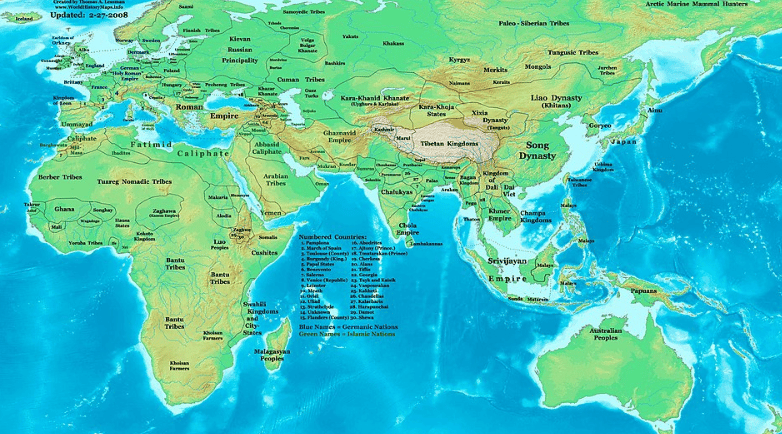Do You Know What the World Looked Like 1,000 Years Ago
#HistoryFacts, #MedievalWorld, #AncientCivilizations, #1000YearsAgo, #WorldHistory, #CholaDynasty, #SongDynasty, #Vikings, #GoldenAgeOfIslam, #MayanCulture, #ByzantineEmpire, #HumanProgress, #World
KNOWLEDGE & EDUCATION
7/27/20252 min read


A millennium ago, in the year 1025 AD, the world was vastly different. No planes, no smartphones, and no global news. Civilizations thrived and faded, kingdoms rose and fell, and remarkable innovations were already shaping the future. Let’s step back in time to explore what life looked like 1,000 years ago.
1. Global Civilization Overview
Europe: Europe was in the midst of the Middle Ages. Feudalism dominated, and the Catholic Church held immense power. Castles dotted the countryside, and knights served under kings and lords.
Asia: The Song Dynasty ruled China, bringing advances in printing, gunpowder, and commerce. In India, the Chola Dynasty was at its height, excelling in art, architecture, and maritime trade.
Middle East & Africa: The Islamic Golden Age was still vibrant in places like Baghdad, Cairo, and Cordoba, driving progress in medicine, astronomy, and philosophy. The Ghana Empire was thriving in West Africa through trade in gold and salt.
Americas: The Maya civilization had declined, but the Toltecs in Central Mexico and Mississippian cultures in North America were flourishing, building massive mounds and cities.
Scandinavia: The Viking Age was fading, but Norse explorers like Leif Erikson had already reached North America (around the year 1000 AD).
2. Religion and Belief Systems
Christianity, Islam, Hinduism, and Buddhism were already widespread.
Pagan beliefs still existed in parts of Europe and indigenous regions.
Religion often influenced governance, education, and even warfare.
3. Technology and Innovations
Paper money was being introduced in China.
The astrolabe was used by astronomers and navigators.
Windmills appeared in Persia.
Medical texts and surgeries were being practiced in the Arab world, far more advanced than in Europe.
4. What Did People Eat and Wear?
No potatoes, tomatoes, or chocolates in Europe—they came later from the Americas.
In India and Asia, rice, lentils, spices, and tea were common.
Clothing was made from wool, cotton, and silk, often dyed with natural colors.
Royals wore fine garments; peasants had simple, handmade clothes.
5. Major Events Around 1025 AD
King Canute ruled over England, Denmark, and Norway.
The Chola naval expedition reached Southeast Asia.
The Fatimid Caliphate controlled North Africa and parts of the Middle East.
Byzantine Empire was still a powerful force in Eastern Europe.
6. Transportation and Travel
Travel was slow—by horse, camel, or on foot.
Sea trade thrived in the Indian Ocean and Mediterranean.
The Silk Road connected the East and West for trade and culture.
7. Arts and Culture
Epic poetry, folklore, and oral traditions were passed down generations.
Beautiful temples, mosques, and cathedrals were being constructed.
Music was often religious or tribal and played on primitive instruments.
8. Life Expectancy and Health
Average life expectancy was around 30-40 years.
Plagues, wars, and poor hygiene were common threats.
Herbal medicine was the most widely used treatment.
Conclusion
Though separated by 1,000 years, the people of 1025 AD lived vibrant lives filled with battles, beliefs, creativity, and ambition. Their innovations, cultures, and ideas laid the foundation for our modern world. Looking back at history helps us understand how far humanity has come—and how interconnected we’ve always been.
Knowledge
Empowering minds with reliable educational content daily.
Newsletter Signup
© 2025 DoYouKnow. All rights reserved.
Stay Ahead of the Trends – Join Our Newsletter
